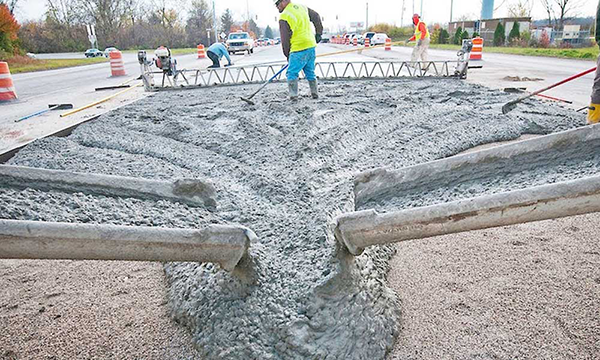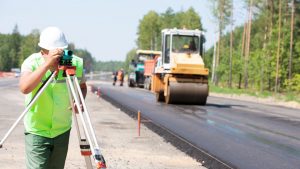Canada is road-dependant. There are over one million kilometres of public roads spanning the country. According to Canada’s Core Public Infrastructure Survey for 2020, more than 90,000 kilometres of road construction was completed from 2017 to 2020.
More new roads appear likely if Ontario is any indication. The province has been very active promoting its outlook on new road construction, particularly for high-speed highways near the GTA.
At the same time, only 54 per cent of Canadian roads are reported to be in either good or very good condition. This points to the importance of road repair and replacement. Alongside this, greenhouse gas (GHG) emissions associated with road construction and maintenance need to be addressed.
A new study by the MIT Concrete Sustainability Hub suggests ambitious carbon reduction approaches must be taken to address these dual issues.
Researchers began with an analysis of the GHG issues associated with road construction. They estimated the annual GHG emissions of all construction materials used in the U.S. pavement network are 11.9 to 13.3 megatons, the equivalent of a gasoline-powered passenger vehicle driving about 30 billion miles in a year.
Next, the MIT research team developed what is described as “a dynamic model” to quantify the embodied impact of future pavement materials demand for the U.S. road network. This included consideration of “annual traffic volume and surface conditions, budget constraints, regional variation in pavement treatment choices and pavement deterioration.”
The MIT team projected if local municipalities, regional authorities and the federal government continue with a “business as usual” approach to road construction and repair, GHG emissions associated with the construction of the U.S. pavement network would increase by 19.5 per cent by 2050.
However, by that same date significant reductions of cumulative GHG emissions would be possible if “ambitious solutions” such as carbon capture and alternate material mixtures are pursued.
“The carbon-neutral goal can only be achieved if multiple solutions, including modified material mixtures, are applied simultaneously for reducing, avoiding and neutralizing the embodied impact.”
For example, “both asphalt and concrete mixtures can become carbon neutral by 2050 through aggressive grid and transportation decarbonization.”

“The effectiveness of these solutions to ultimately achieve carbon neutrality depends strongly on background electricity grid decarbonization as well as electrification of transport systems in the foreground supply chain, including the transportation of concrete and asphalt ingredients and mixtures to the site.”
Where the MIT study gets interesting is the suggestion concrete would make better roads if low-carbon mixtures were used. They estimate concrete is currently only used for six per cent of traffic lanes.
“Concrete pavements can offer GHG savings across the whole life cycle as they are stiffer and stay smoother for longer,” writes Andrew Paul Laurent of the MIT Concrete Sustainability Hub, “meaning they require less maintenance and have a lesser impact on the fuel efficiency of vehicles.”
Carbon neutrality is more likely through increased use of concrete instead of asphalt, the study suggests.
“Asphalt materials would achieve an embodied GHG reduction of only 49 per cent in 2050, whereas the average embodied emission for concrete would fall by 84 per cent.”
Laurent also references the cooling benefits offered by concrete versus black asphalt top surfaces.
“Concrete pavements have other use-phase benefits including a cooling effect through an intrinsically high albedo, meaning they reflect more sunlight than regular pavements. Therefore, they can help combat extreme heat and positively affect the earth’s energy balance through positive radiative forcing, making albedo a potential neutralization mechanism.”
In terms of surface maintenance of existing asphalt roads, one possibility for efficient and low emission surface repair is offered by Ajax-based RSR-Road Surface Recycling. As outlined in a recent Inside Innovation column, the company claims their Hot-in-Place asphalt replacement process reduces greenhouse gasses by up to 70 per cent.
Laurent concludes by acknowledging the complexity of road projects among different players in different regions.
“The path to pavement network carbon-neutrality is somewhat of a winding road.”
John Bleasby is a freelance writer. Send comments and Inside Innovation column ideas to editor@dailycommercialnews.com.











Recent Comments